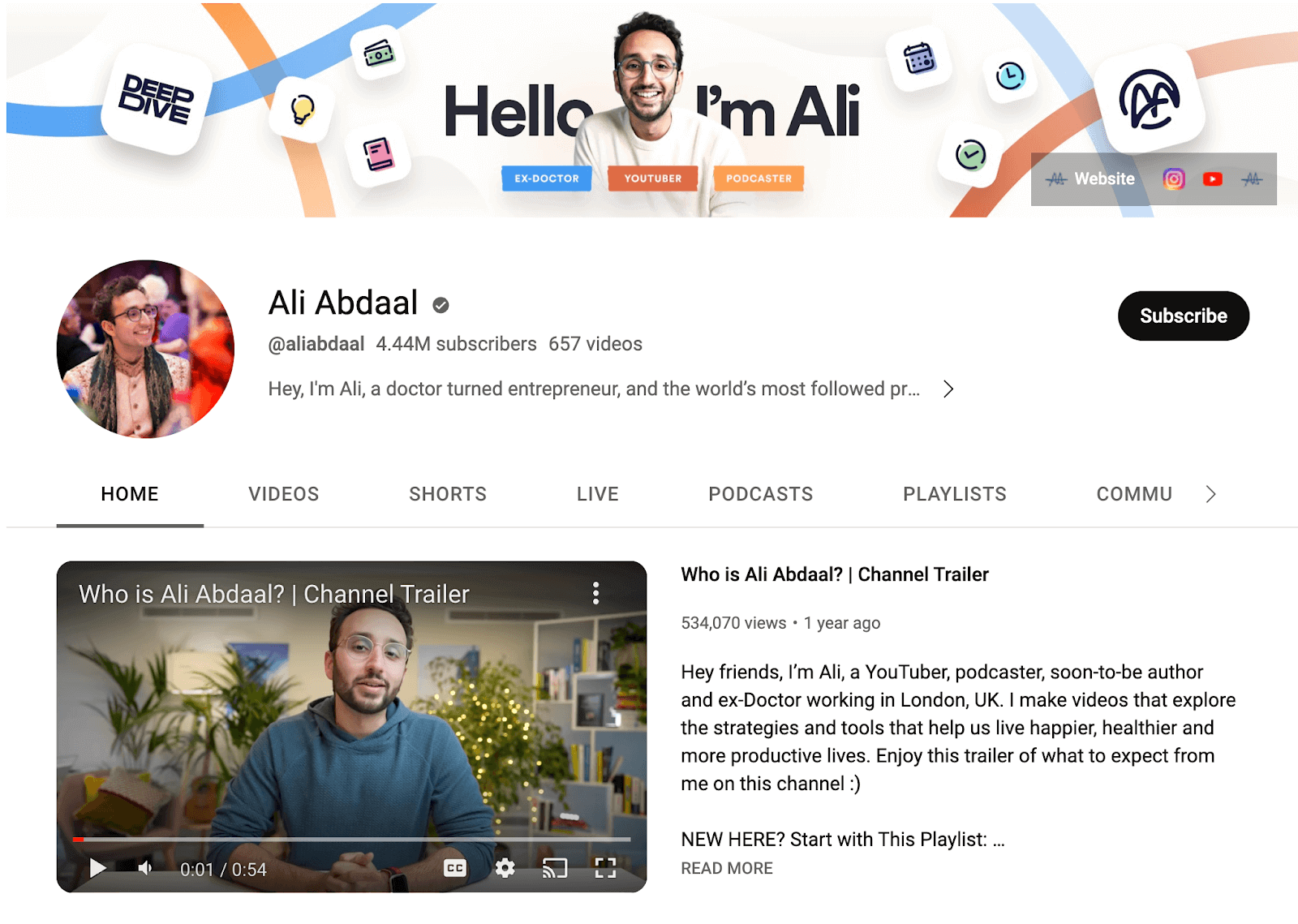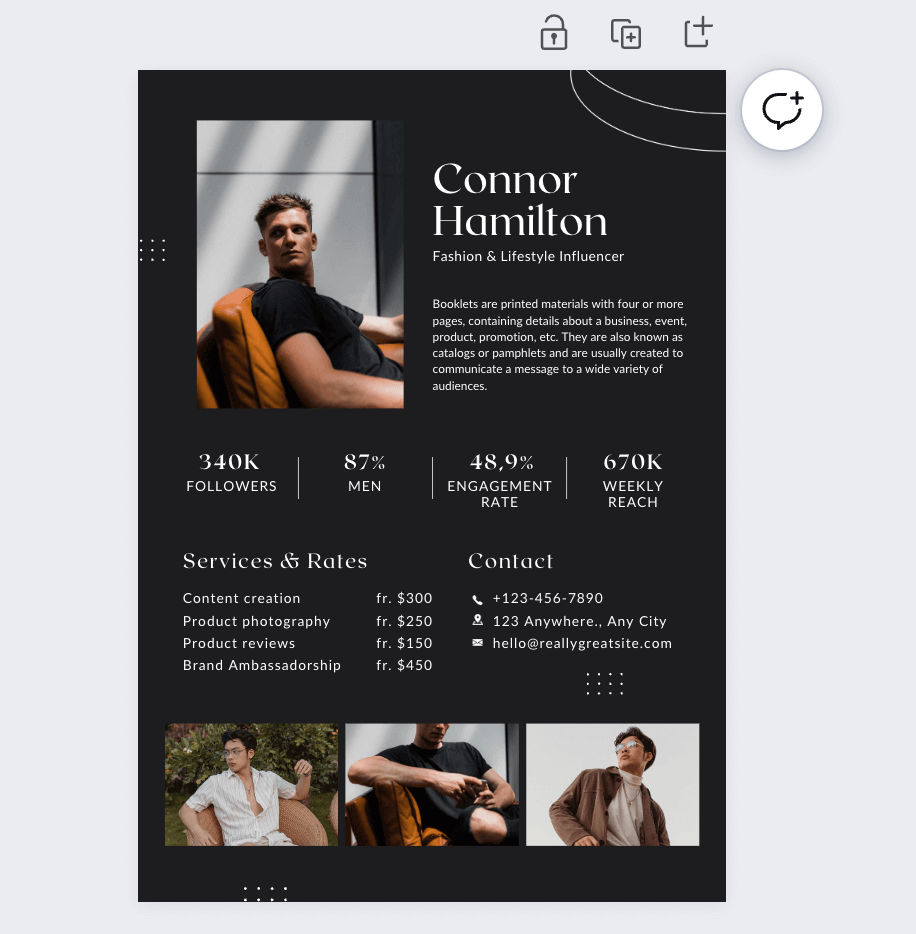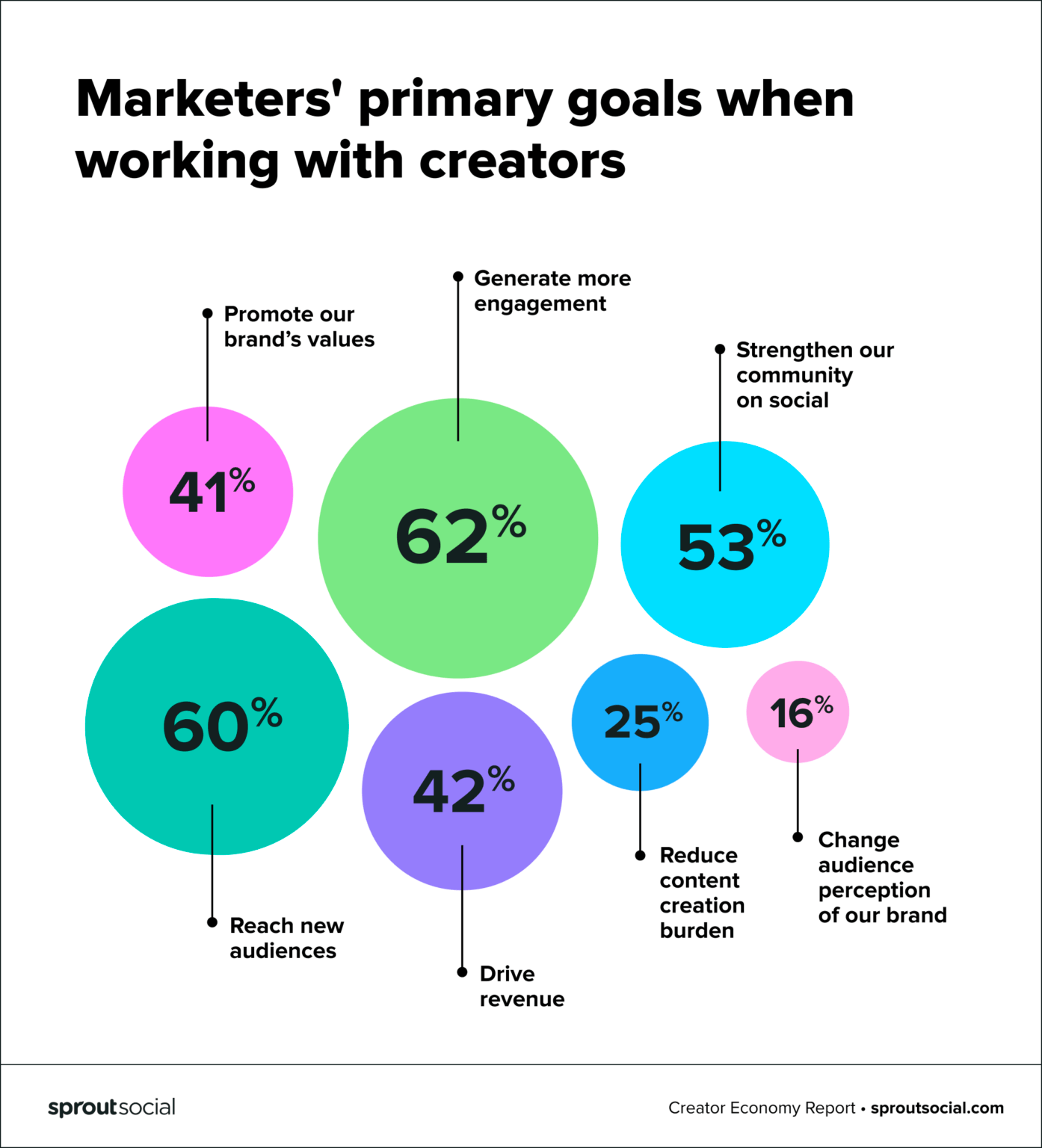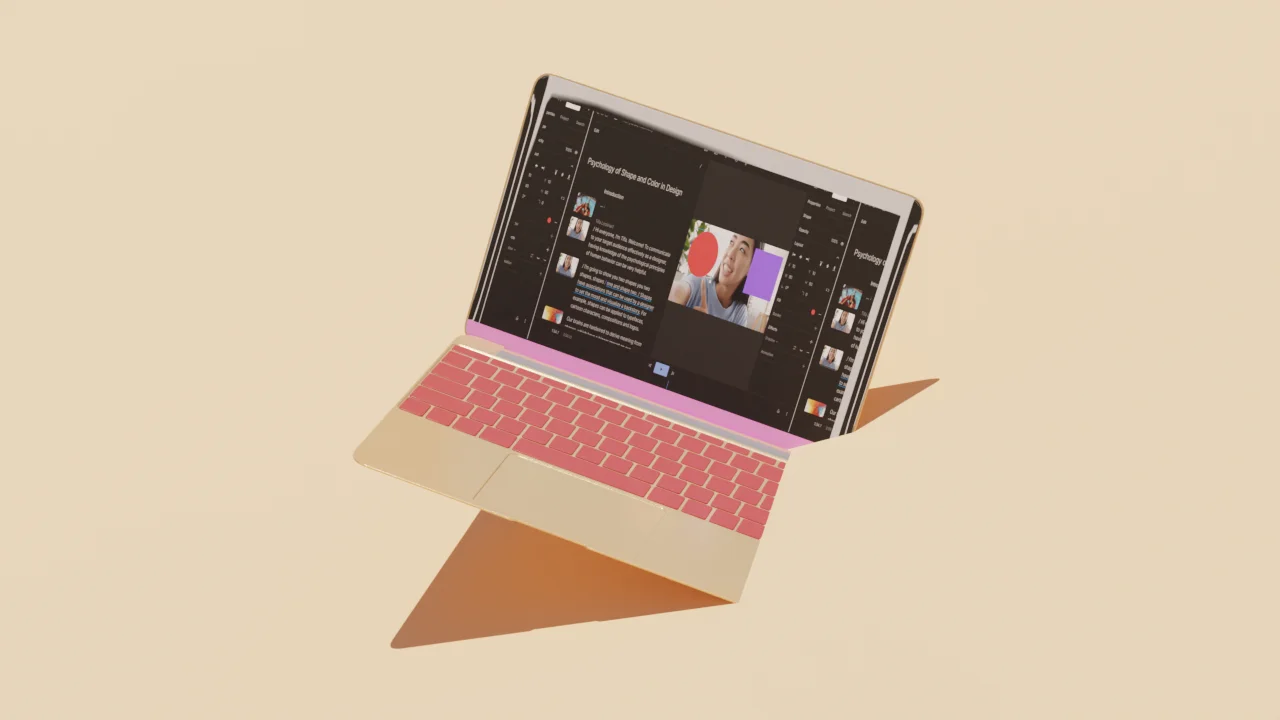Securing a sponsorship for your YouTube channel is a dream for many creators.
Sponsorships provide an extra stream of income for your creator business. In most cases, you’re earning revenue by recommending the brands you already know and love.
There’s just the small problem of securing them. The process of finding sponsorship deals often feels tiring or overwhelming. Pitching is intimidating, and if you’re still growing your channel, you might be unsure which type of brands would collaborate with you.
Luckily, the YouTube influencer industry is still thriving, and many new brands are searching for creators to produce sponsored content. In this article, you’ll learn an easy and repeatable way to pitch and get sponsors for your YouTube channel.
How much do YouTube sponsors pay?
Securing a sponsorship for your YouTube channel is one of the most effective ways to start making money as a creator. Despite the rise of short-form video platforms like TikTok, almost half of marketers still plan to spend their influencer marketing budget on YouTube.
Statista found YouTube sponsorship deals vary by subscriber count:
- 1,000 to 10,000 subscribers: Up to $850
- 10,000 to 50,000 subscribers: Up to $2,240
- 50,000 to 500,000 subscribers: Up to $5,859
- 500,000 to one million subscribers: $16,234

It makes sense that the bigger your channel is, the more money you can demand from brand sponsors. Take automotive-themed YouTube channel DonutMediaTV, for example, which has over 7.8 million subscribers and a reported influencer media value of around $5 million.
But don’t count yourself out yet if you’ve got a smaller channel. Audience overlap and engagement are just as important as subscriber count. Brands pay big bucks to collaborate with creators who are trusted by their audience — even if the audience isn’t in the million-subscriber range.
Types of YouTube sponsorships
There are several types of sponsorships you can get to monetize your channel. These include:
- Product reviews. This sponsorship happens when a brand sends free products in exchange for a video review or mention. (Depending on the size of your YouTube channel, there may be extra compensation alongside the free product.)
- Affiliate partnerships. This sponsorship model gives you a percentage of the money viewers spend through your affiliate links. Commissions can range from 5% to 30% — a scalable way to supplement your income as a YouTube creator.
- Paid sponsorships. This sponsorship is viewed as the traditional influencer collaboration. Brands pay YouTube creators a fixed fee to talk about their products, services, or company. This can range from a single video to a multichannel campaign that spans several videos and sponsored posts.
You don’t have to pick one of these sponsorship models. Doug Cunnington, creator of Niche Site Project, says: “As a seasoned YouTube content creator with a knack for internet marketing and SEO, securing sponsorships for my channel has been an integral part of my journey.
“I've delved into various sponsorships, including product reviews, affiliate marketing, and sponsored videos. The array of sponsorships helps diversify my income, and each type offers a unique dynamic to my audience.”
How to get sponsored on YouTube
- Prepare your channel for sponsors
- Create a media kit
- Build a pitch list
- Craft your sponsorship pitch
- Try sponsorship networks
- Agree on pricing
- Wrap up the paperwork
1. Prepare your channel for sponsors
The process of securing sponsorship deals starts long before you find brands to pitch.
Brands usually have a checklist before they invest money in a creator. The more professional your YouTube channel looks, the more likely they are to trust you with their budget.
The first (and most important) factor? High-quality content. Sponsors want to work with creators who have an engaged audience—especially if their goal is sales or brand awareness. Set up a YouTube studio and post high-quality videos on a regular basis to develop a relationship with your audience — one a brand would pay to tap into.
Other ways prepare for future YouTube sponsorship opportunities include:
- Audit your personal brand. A strong, consistent design can strengthen your image and reputation. Make sure your YouTube banner, channel description, thumbnails, and video titles reflect your brand.
- Create a channel trailer. A channel trailer educates people visiting your channel for the first time. The purpose is to welcome new visitors, explain the topics you talk about, and tell subscribers how often they should expect a new video.
- Increase YouTube video views. Sponsorship rates increase as your subscriber and view count do. Build a larger, more engaged audience by optimizing your videos for the YouTube search algorithm, creating playlists of related videos, using hashtags, and promoting content on other social media channels.
Ali Abdaal is one YouTube creator who puts this into practice. People visiting his YouTube channel see a 1-minute video explaining who Ali is, his medical background, and the topics he discusses on his channel. Brands can easily evaluate whether Ali’s YouTube channel is a good fit for their audience.

2. Create a media kit
A media kit is a one-page document that provides key information about your YouTube channel to brands interested in sponsoring it. Tools like Canva and Visme have pre-made media kit templates if design isn’t your forte.
In your media kit, detail things a business owner would care about when sponsoring you. That includes:
- A brief description about you and your YouTube channel
- Viewer demographics, including a gender, age, and geographic split
- YouTube metrics, such as subscriber count, average views, and engagement rate
- Previous brand deals with results, if you’re able to share them
- Testimonials from previous corporate sponsors

3. Build a pitch list
No matter how well prepared your YouTube channel is, unfortunately not all sponsorship opportunities come to you.
Doug says: “After I reviewed a certain software I genuinely liked, I reached out to the company about a potential sponsorship. In contrast, some brands approached me after noticing the engagement levels on my channel.”
Take a proactive approach to securing a new sponsorship by preparing a pitch list—a spreadsheet of brands you plan to make a deal with.
Holy Grail clients meet these three criteria: The same target market as your channel, budget to invest in creators, and creativity. (Brands that don’t check all three boxes don’t have to be ruled out, but the checklist acts as a good north star to work toward.)
- “I personally like to reach out to brands that I see are already advertising on social media or YouTube (meaning they do have a marketing budget).” —Sílvia Pinho, creator of Freelancing with Sílvia
Once you’ve made your pitch, treat the spreadsheet like a mini customer relationship management tool. By including the fields below, you’ll have an easy way to track deals and follow up with potential sponsors:
- The potential sponsors’ name
- Its target audience
- Previous creator collaborations (if any)
- Contact information of its influencer or marketing manager
- Date contacted
- Planned follow-up date
4. Craft your sponsorship pitch
If the word pitch makes you cringe, you’re not alone. But here’s the secret: brands actually need creators who can tell an authentic story about their products. So, yes, you have real value to offer. Don’t sabotage that by treating your pitch like a one-sided monologue. Focus on how your channel and audience can help the brand meet its goals—that’s what they’re really paying for.
That said, there’s science behind pitching brands for a sponsorship. Creators tend to go wrong by making it all about themselves.
“What brands care about is their own marketing objectives,” says Justin Moore, sponsorship coach and creator of Creator Wizard. “How can you illustrate that sponsoring you is going to help them accomplish their marketing objectives?”
Justin created the ROPE method to keep sponsorship pitches succinct:
- R: Relevant to a campaign they’ve run in the past or are currently running
- O: Tie your pitch back to organic content you’ve already posted to illustrate audience affinity
- P: Proof — show how you’ve helped another brand achieve results
- E: Easy to execute
Pull on the pain points a brand would have when working with creators to stir up an emotional reaction from your sponsorship proposal.
According to one study, 62% of brands want to sponsor creators because of the audience engagement. Another 60% want to reach a new audience, and 42% prioritize generating additional revenue. Prove to a brand how you can help meet these needs with a pitch that addresses their concerns.

Sponsorship packages are a smart way to increase revenue, especially if you’re a micro-influencer with a small subscriber count. A $250 sponsored video could quickly become a $1,000 deal if you throw in LinkedIn promotion or video snippets for the brand to repost as YouTube Shorts.
Unsure where to start? Here’s an example YouTube sponsorship pitch to work from:
“Hi Beth,
I’m Elise, the creator behind the Peak Freelance YouTube channel. Our goal is to help freelance writers scale their businesses (much like yours!). We’ve amassed 10,000 subscribers and have 50,000 hours of watch time across all of our videos.
I’m reaching out because we’ve had a rare space open for sponsorship and think BRAND would be the perfect fit.
We’ve helped brands like NAME, NAME, and NAME create content they’ve repurposed on their own social media channels. One campaign we ran with BRAND also attracted 45,000 views and drove $10,000 in revenue for the company within just two weeks of the video going live.
Our media kit is attached which contains detailed metrics about our channel, previous collaborations, and ways we could work together.
If this is something you’d be interested in, I’d love to chat.”
5. Try sponsor networks or influencer agencies
Most often, brands with a large influencer budget will enlist the help of a specialized agency to source creators and manage campaigns.
Reach out to these matchmaking agencies throughout your pitching process. If you can demonstrate results for one of their clients, there’s a strong likelihood of being hired for other clients on their roster.
Popular sponsorship agencies include:
- BrandConnect (owned by YouTube)
- Ubiquitous
- Neoreach
- Upfluence
- The Influencer Marketing Factory
- Looking For Sponsor, which connects YouTubers of any size to potential brand partners.
6. Agree on pricing
Talking about money can sometimes feel… awkward. But as a professional YouTube creator, confidence is the secret to closing deals.
“Negotiating sponsorship deals is a dance that requires a good understanding of your value proposition and a mutual win-win scenario,” Doug says.
“For instance, when I negotiated my first sponsored video, I spent time analyzing my channel's reach and engagement level. It wasn't about underselling or overselling but communicating the real value that I could deliver for the brand.”
There are several models to choose from when pricing YouTube sponsorships:
- Cost per mille (CPM): A set fee for every 1,000 views your sponsored video gets
- Cost per action (CPA): A set fee for every action, such as website sign-up or purchase
- Commission rate: The percentage of each order placed through your affiliate links
- Flat fee: A flat fee for the sponsorship, regardless of video performance
- “If brands say you can’t work with any of their competitors for 12 months, there’s an opportunity cost there you need to quantify and capture in the rates that you’re providing.” —Justin Moore, sponsorship coach
There might be some back-and-forth on rates before moving to the next step. Negotiation is good, but don’t sway too much on your rates.
Brands might look at you as a creator who’d do anything for money if you cut your fee by 50% after a single email exchange. Remember the value you provide and the audience you’re serving throughout the negotiation process. Don’t be afraid to move on if there’s too big of a difference between your rate and a brand’s budget.
7. Wrap up the paperwork
A contract is a legally binding agreement between your creator business and a brand sponsor. While it might sound like an unnecessary step, a contract protects your business as it details payment terms. It should be signed by both parties and include:
- Clear deliverables (e.g. one 30-second mention in a YouTube video)
- Timescales
- Who owns the content
- Payment terms
- Cancellation policy
Established brands that have worked with YouTube creators might have a ready-made contract for you to sign.
For smaller or local businesses, the onus may be on you. These templates from Indy and Creators Legal can speed up the process, but it’s always worth having a lawyer or contract attorney on-hand to review any contracts you’re signing.
Also note that YouTube requires you to disclose any paid promotion. According to YouTube’s Help Center, you must select the 'paid promotion' box when uploading your video if it contains product placements, endorsements, or sponsored content. That way, you stay transparent with your audience and comply with platform policies.
Get more YouTube sponsorships for your channel
Sponsorships are a superb way to monetize your YouTube channel. Whether it’s an affiliate deal or channel-wide sponsorship, use these techniques to initiate a successful collaboration and charge what you’re worth.
As your channel begins to grow, there’s a good chance that more sponsorships will come to you, rather than fishing for them. Doug summarizes: “While sponsorships can boost your income, remember to only work with brands that align with your channel's ethos and your audience's interests.
“After all, your audience's trust is your greatest asset, and compromising that for a quick buck can have long-term repercussions.”
Frequently asked questions
Can small YouTubers get sponsors?
Yes. Brands often look beyond subscriber count and focus on engagement and audience fit. Even if you have a smaller channel, you can attract sponsors by creating quality content and building a loyal community.
How many views do you need on YouTube to get sponsored?
There’s no fixed number of views or subscribers required. Brands usually look for engaged audiences and a channel that fits their products. Some creators land sponsorships with just a few thousand engaged viewers if their channel aligns well with a sponsor’s goals.
How much does it cost to be sponsored on YouTube?
Getting sponsored doesn’t cost you anything—brands pay you, not the other way around. You’ll typically negotiate compensation or free products in exchange for promoting a brand in your videos.
How do I get a sponsor on YouTube in a few steps?
Build a channel with consistent, high‑quality content, develop a clear brand identity, and research potential companies whose audience matches yours. Next, create a short media kit highlighting your channel’s data and audience details. Then pitch your proposal directly to brands or join sponsorship platforms that connect YouTubers with advertisers.




































%20(1).JPG)




